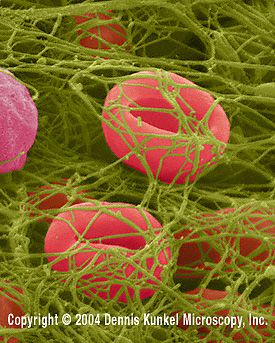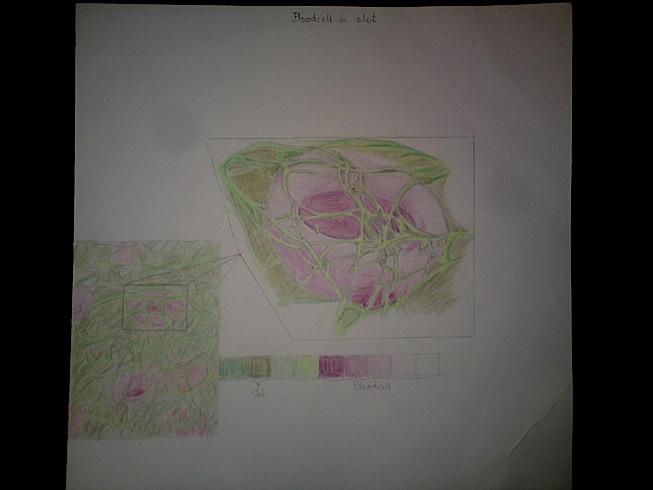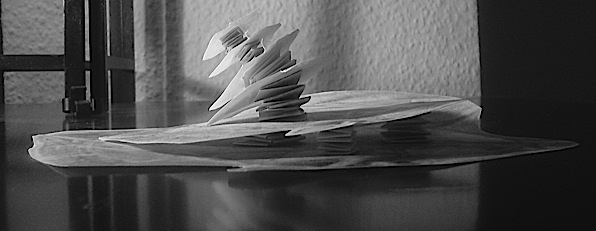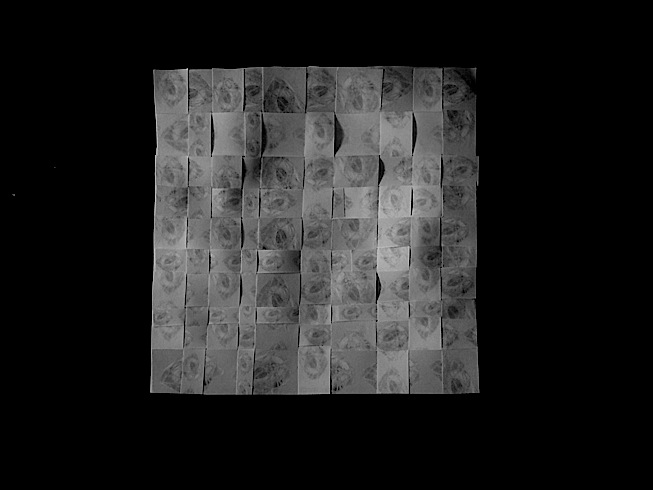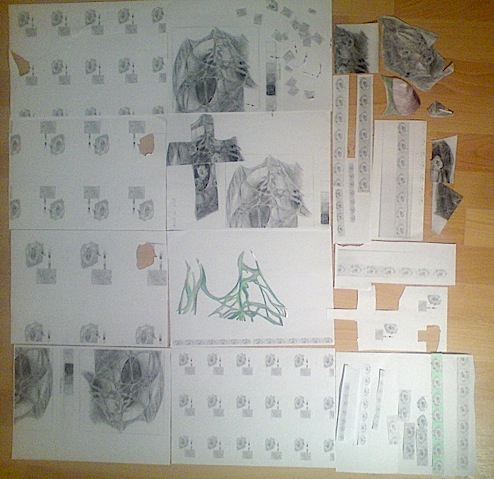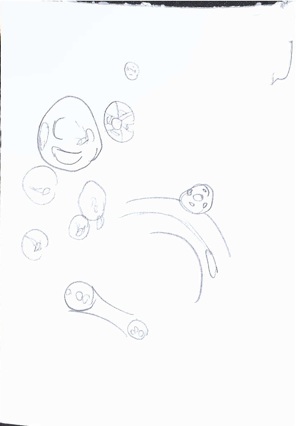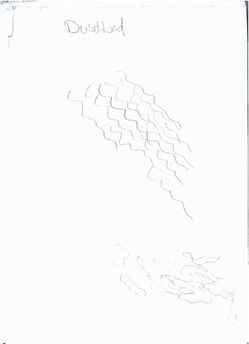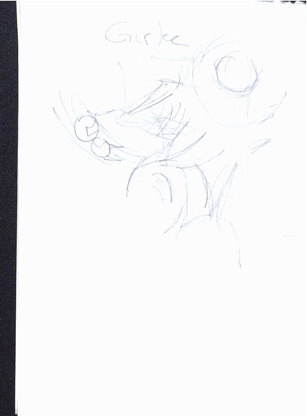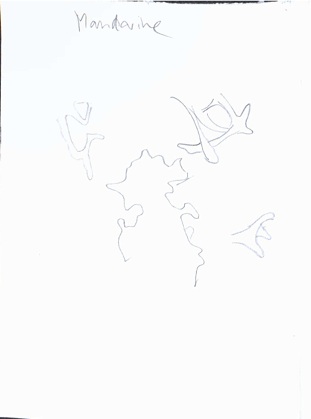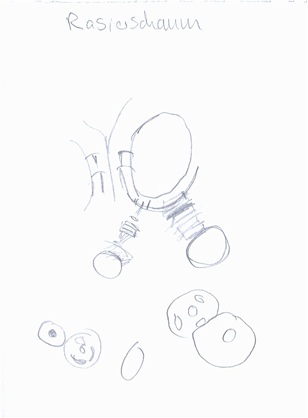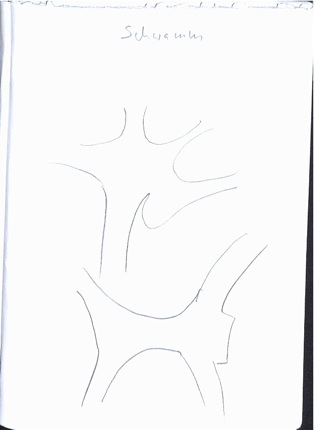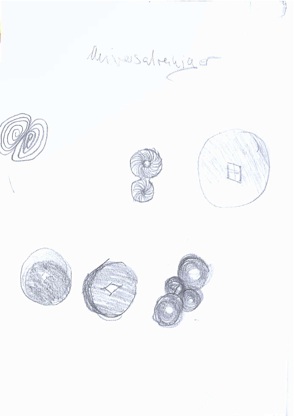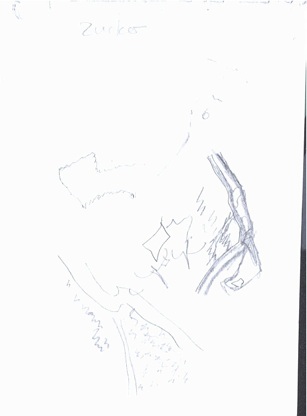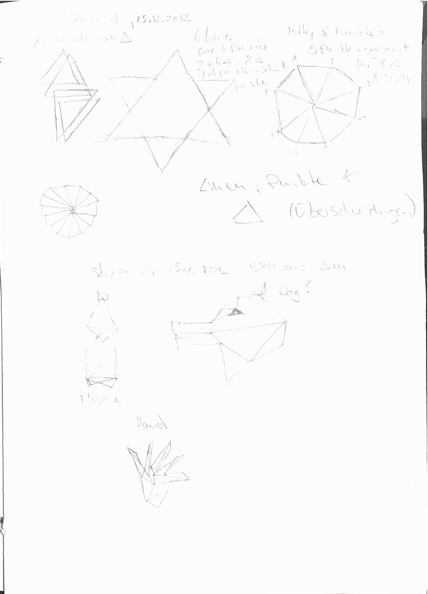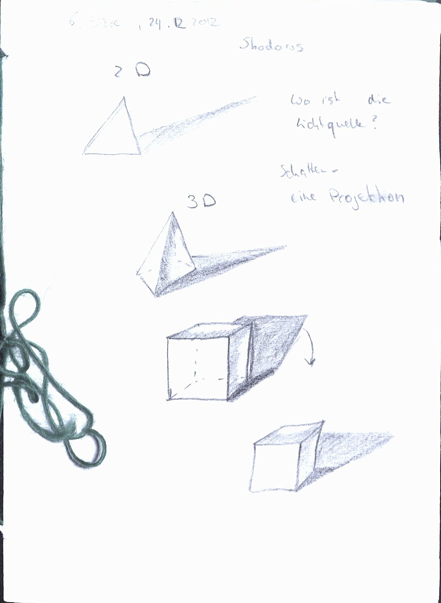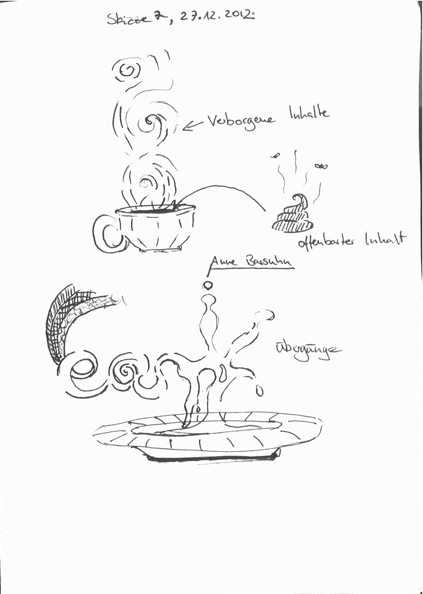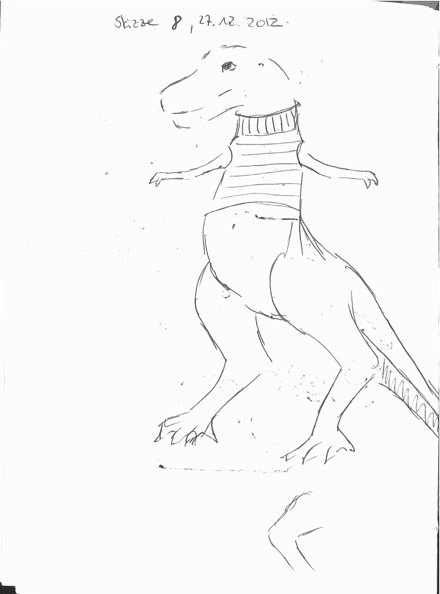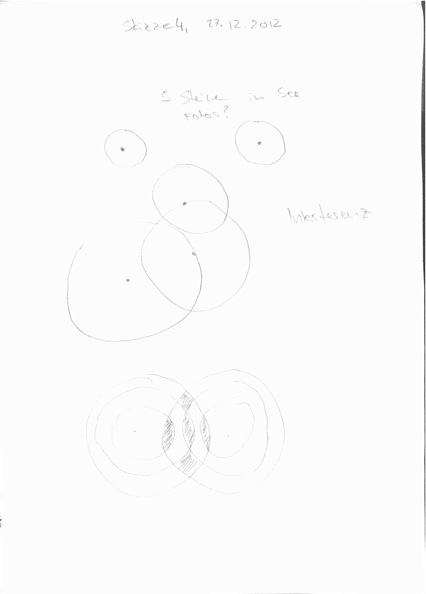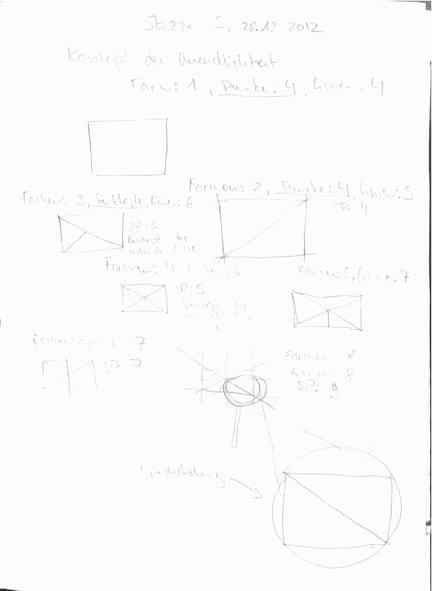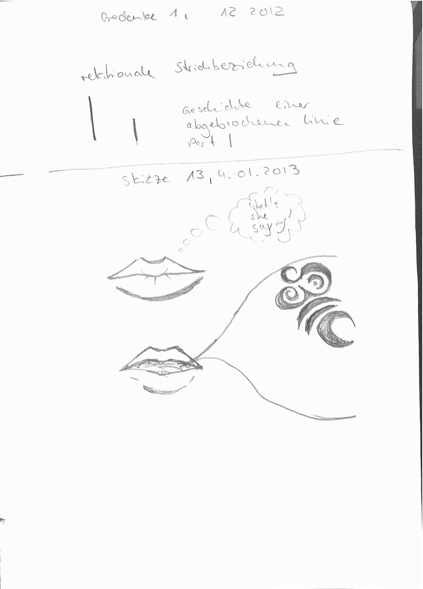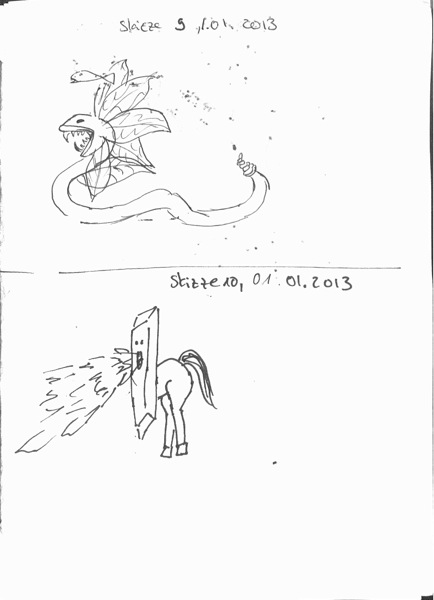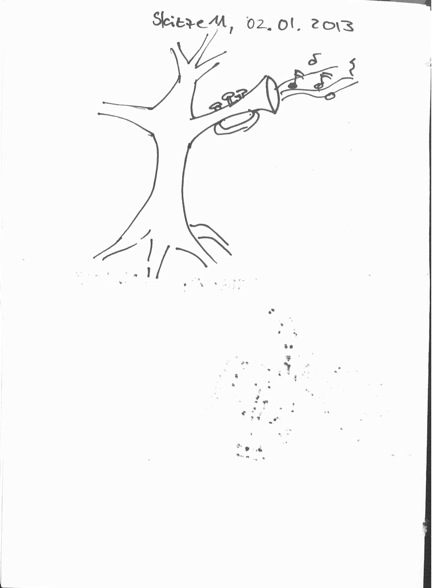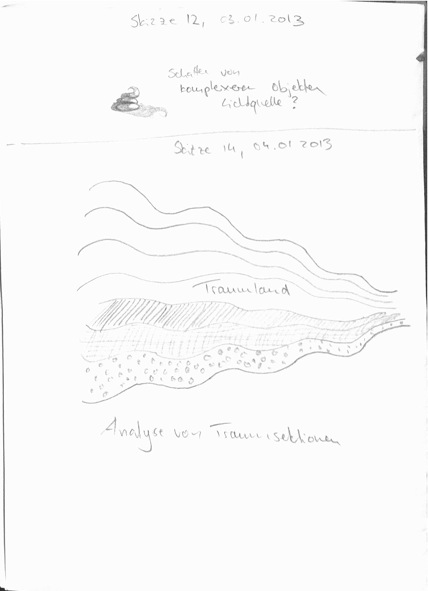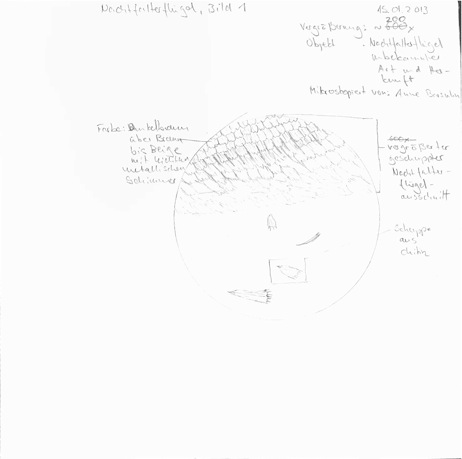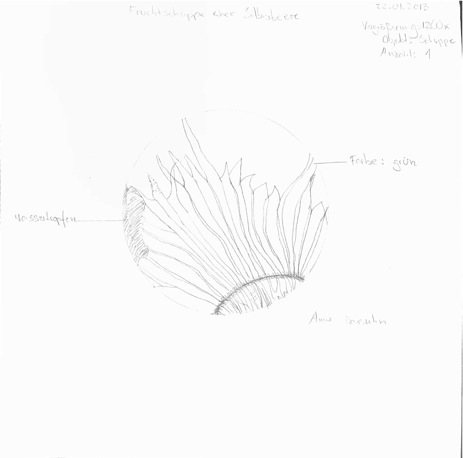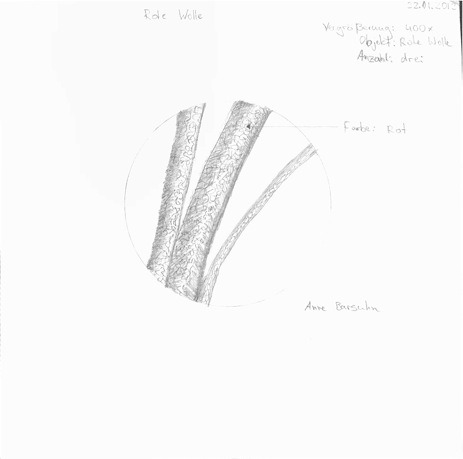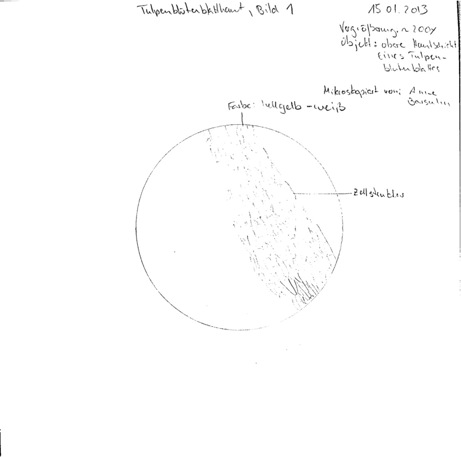No edit summary |
No edit summary |
||
| (2 intermediate revisions by the same user not shown) | |||
| Line 1: | Line 1: | ||
After the first lessons we started drawing. | |||
We chose a microscopic image of a blood cell in a clot to draw. | |||
This is the original image: | |||
[[File:Bloodcell.jpeg]] | |||
How I drew it: | |||
[[File:Blood_cell_drawing.JPG]] | |||
What I made of my drawn image playing with scaling: | |||
I copied my drawn image plenty times ar different scales and build a scaling pyramid with it. | |||
The bottom is the largest and the top the smallest copy of the blood cell. | |||
[[File:3D_blood_cell_modell.JPG]] | [[File:3D_blood_cell_modell.JPG]] | ||
[[File:3D_blood_cell_modell_profile.jpg]] | [[File:3D_blood_cell_modell_profile.jpg]] | ||
I tried to use the small copies of the cells as a pattern and make something similar looking to a carpet or tapestry: | |||
[[File:Blood_cell_grid.JPG]] | [[File:Blood_cell_grid.JPG]] | ||
These are the copies etc. which I used while working on the scaling: | |||
[[File:Work_process.jpg]] | [[File:Work_process.jpg]] | ||
Our last lesson before christmas was looking at brought subjects under the microscope of a classmate. | |||
My sketches: | |||
[[File:Skizze_duschbad_s.jpg]] | |||
[[File:Skizze_duschbad1_s.jpg]] | |||
[[File:Skizze_gurke_s.jpg]] | |||
[[File:Skizze_mandarine_s.jpg]] | |||
[[File:Skizze_rasierschaum_s.jpg]] | |||
[[File:Skizze_schwamm_s.jpg]] | |||
[[File:Skizze_universalreiniger_2.jpg]] | |||
[[File:Skizze_zucker_s.jpg]] | |||
As a kind of homework assignment we were supposed to draw in a sketchbook. | |||
I drew some sketches and some of them are quite funny inspired by friends and their imagination. | |||
The fire spitting French Fry was drawn in the Mensa in Weimar while eating. | |||
The idea that stuck and will be reencountered in my final project is the shadow idea. | |||
Where is the light source? | |||
These are all of my sketches: | |||
[[File:Skizzenbuch_s3.jpg]] | |||
[[File:Skizzenbuch_s1.png]] | |||
[[File:Skizzenbuch_s4.jpg]] | |||
[[File:Skizzenbuch_s5.jpg]] | |||
[[File:Skizzenbuch_s6.jpg]] | |||
[[File:Skizzenbuch_s9.jpg]] | |||
[[File:Skizzenbuch_s10.jpg]] | |||
[[File:Skizzenbuch_s11.jpg]] | |||
[[File:Skizzenbuch_s7.jpg]] | |||
[[File:Skizzenbuch_s8.jpg]] | |||
[[File:Skizzenbuch_s2.jpg]] | |||
As the last part of our course we used a microscope to look at interesting objects and together decide which ones we want to draw. | |||
In the end we had the wing of a moth, a tulip petal and the scale of a berry. Furthermore I used strings of red wool. | |||
I drew without colour only with a pencil. | |||
These are the objects drawn: | |||
[[File:Schmetterlingsfluegel.jpg]] | |||
[[File:samen_1.jpg]] | |||
[[File:rote_wolle.jpg]] | |||
[[File:Tulpenbluetenblatt.jpg]] | |||
The end of the course will be the presentation of one project. | |||
I chose a project around shadows as mentioned above. | |||
Title: Shadow Distortion | |||
In my project I aim to compare to groups of students who work with | |||
3D-modelling on a daily basis. | |||
My goal is the analysis of their spatial sense based on shadow distortion. | |||
My approach to this analysis is as follows. | |||
First part: | |||
I will take approximately 10 pictures of simple objects with different | |||
illumination. | |||
The lightsource will not be depicted in the photo. | |||
For each picture there will be a spatial map where the lightsource was | |||
located. This is kept secret from the probands and will be revealed | |||
only after the experiment is over. | |||
The probands will be given a spatial map without the lightsource and | |||
asked to draw the lightsource into the given spatial map. | |||
Second part: | |||
I will take again 10 pictures of different simple objects and then | |||
draw them as close to reality as possible. Then these drawn objects | |||
will be scanned in. | |||
But instead of preserving the original shadows I will distort some of | |||
the shadows or place them somewhere different from their original | |||
position. | |||
This is also the second part for the probands. | |||
Given these 10 images they will be asked to point the lightsource again. | |||
Given that the reflection and refraction will stay the same the | |||
probands may detect that the pictures have wrong shadow placement. | |||
It is still uncertain if they will be given the knowledge of | |||
wrong-placed shadows in some of the images in advance or be left to | |||
find out on their own. | |||
After having collected all data needed the data will be visualized | |||
using stochastical forms and a conclusion will be drawn concerning my | |||
hypothesis which is that artists have indeed a better spatial sense | |||
than computer graphic students. | |||
The form of my art projected will be a folder with all collected | |||
material concerning this work. This folder can be copied and there | |||
will not be one original. | |||
The pictures drawn then scanned and shot will be included as well as | |||
documentation of the experiment and the captured thought process of | |||
the test persons. | |||
Overlapping maps of all placed lightsources in the spatial maps | |||
including the real one will be added, too. | |||
Also the analysis in form of charts and a short text summarizing the | |||
conclusion, hypthesis and my thought process on this project. | |||
Latest revision as of 21:18, 21 February 2013
After the first lessons we started drawing. We chose a microscopic image of a blood cell in a clot to draw.
This is the original image:
How I drew it:
What I made of my drawn image playing with scaling:
I copied my drawn image plenty times ar different scales and build a scaling pyramid with it. The bottom is the largest and the top the smallest copy of the blood cell.
I tried to use the small copies of the cells as a pattern and make something similar looking to a carpet or tapestry:
These are the copies etc. which I used while working on the scaling:
Our last lesson before christmas was looking at brought subjects under the microscope of a classmate.
My sketches:
As a kind of homework assignment we were supposed to draw in a sketchbook. I drew some sketches and some of them are quite funny inspired by friends and their imagination. The fire spitting French Fry was drawn in the Mensa in Weimar while eating. The idea that stuck and will be reencountered in my final project is the shadow idea.
Where is the light source?
These are all of my sketches:
As the last part of our course we used a microscope to look at interesting objects and together decide which ones we want to draw.
In the end we had the wing of a moth, a tulip petal and the scale of a berry. Furthermore I used strings of red wool.
I drew without colour only with a pencil.
These are the objects drawn:
The end of the course will be the presentation of one project.
I chose a project around shadows as mentioned above.
Title: Shadow Distortion
In my project I aim to compare to groups of students who work with 3D-modelling on a daily basis. My goal is the analysis of their spatial sense based on shadow distortion. My approach to this analysis is as follows. First part: I will take approximately 10 pictures of simple objects with different illumination. The lightsource will not be depicted in the photo. For each picture there will be a spatial map where the lightsource was located. This is kept secret from the probands and will be revealed only after the experiment is over. The probands will be given a spatial map without the lightsource and asked to draw the lightsource into the given spatial map.
Second part: I will take again 10 pictures of different simple objects and then draw them as close to reality as possible. Then these drawn objects will be scanned in. But instead of preserving the original shadows I will distort some of the shadows or place them somewhere different from their original position. This is also the second part for the probands. Given these 10 images they will be asked to point the lightsource again. Given that the reflection and refraction will stay the same the probands may detect that the pictures have wrong shadow placement. It is still uncertain if they will be given the knowledge of wrong-placed shadows in some of the images in advance or be left to find out on their own.
After having collected all data needed the data will be visualized using stochastical forms and a conclusion will be drawn concerning my hypothesis which is that artists have indeed a better spatial sense than computer graphic students.
The form of my art projected will be a folder with all collected material concerning this work. This folder can be copied and there will not be one original. The pictures drawn then scanned and shot will be included as well as documentation of the experiment and the captured thought process of the test persons. Overlapping maps of all placed lightsources in the spatial maps including the real one will be added, too. Also the analysis in form of charts and a short text summarizing the conclusion, hypthesis and my thought process on this project.
